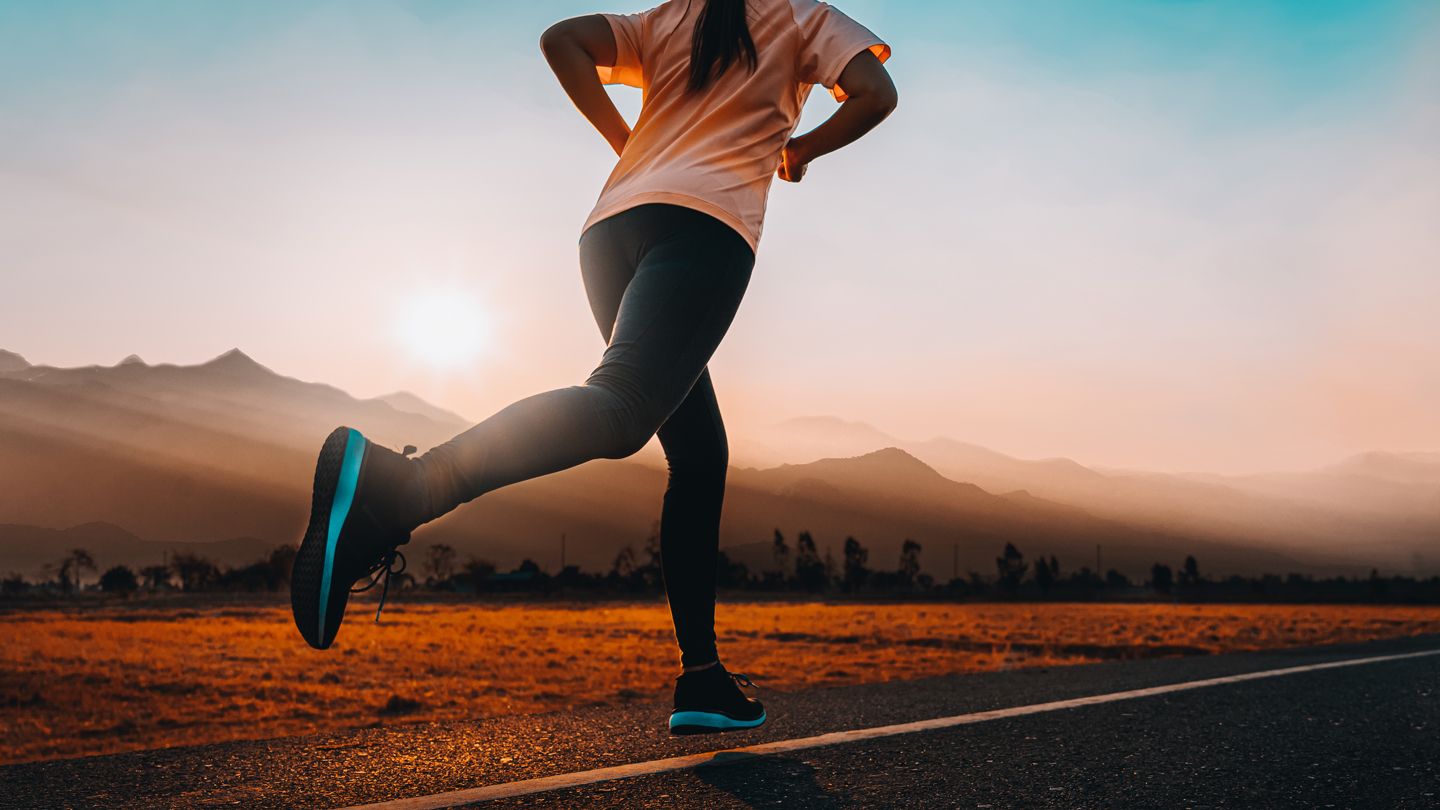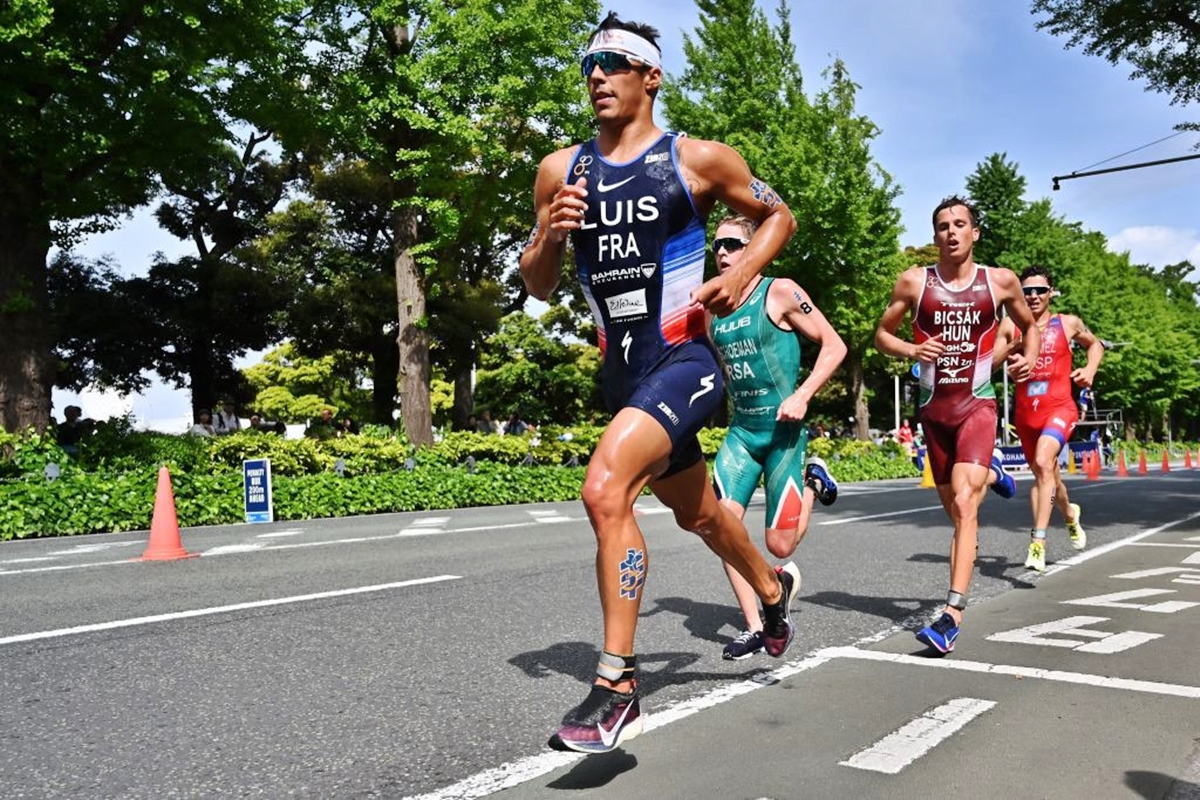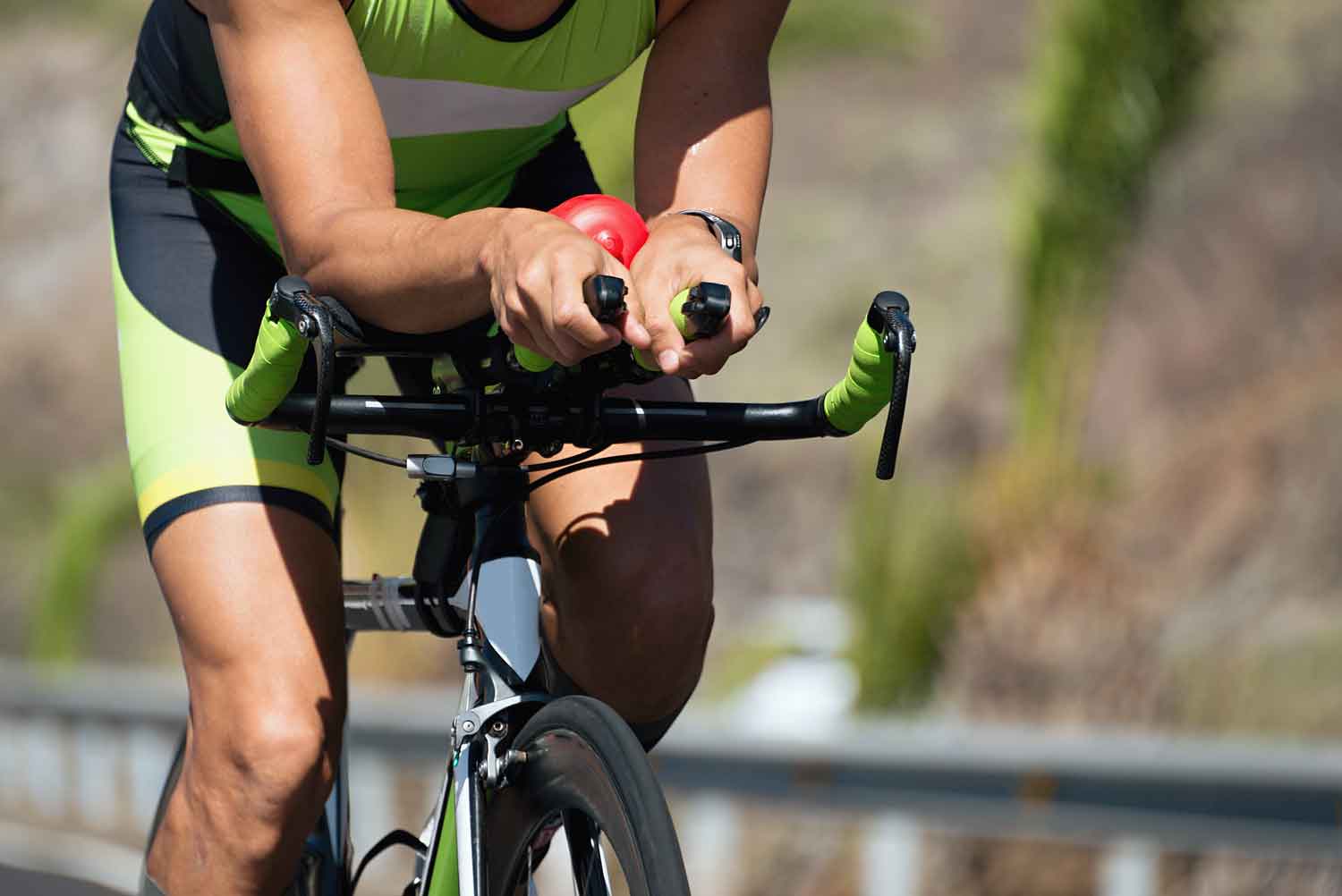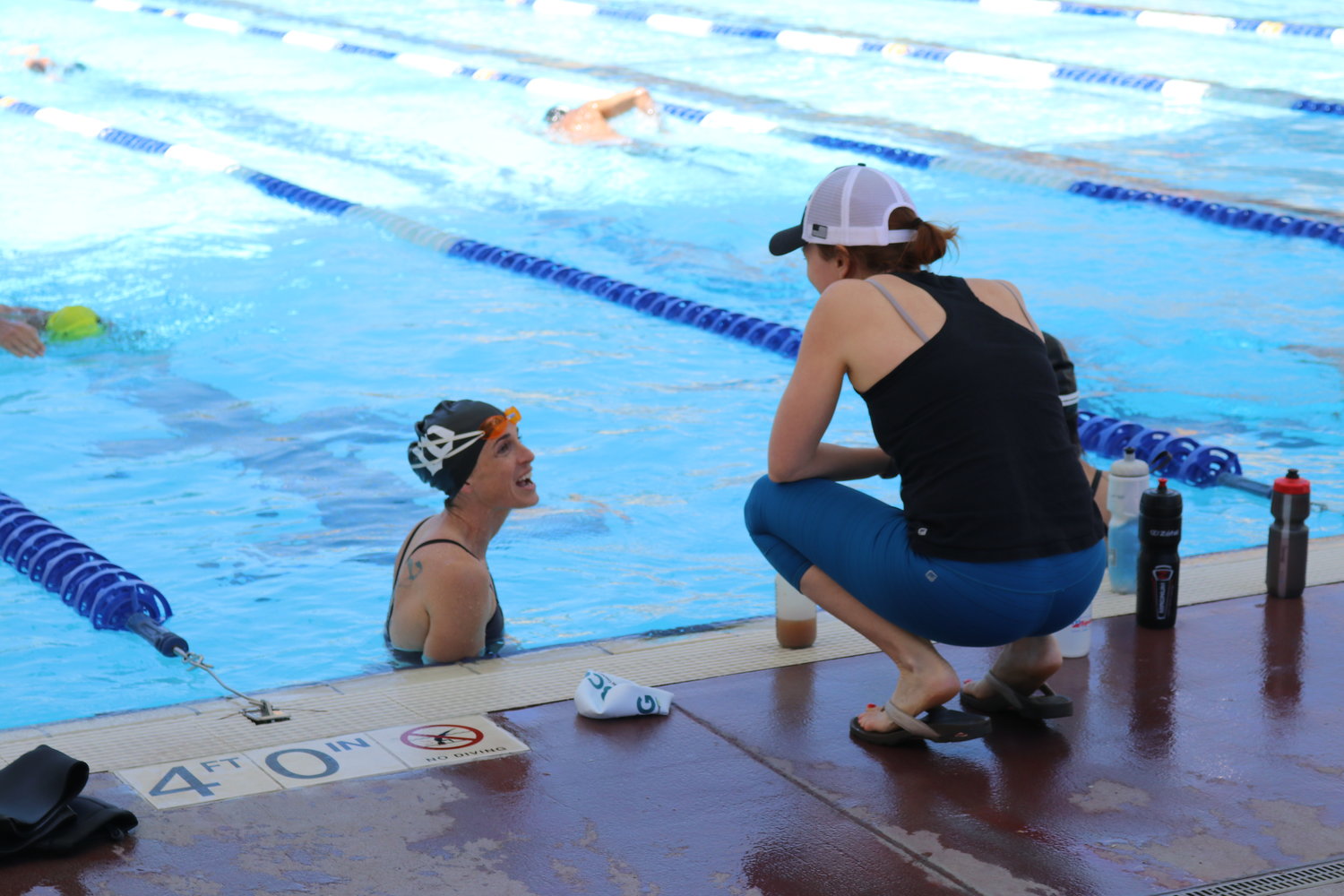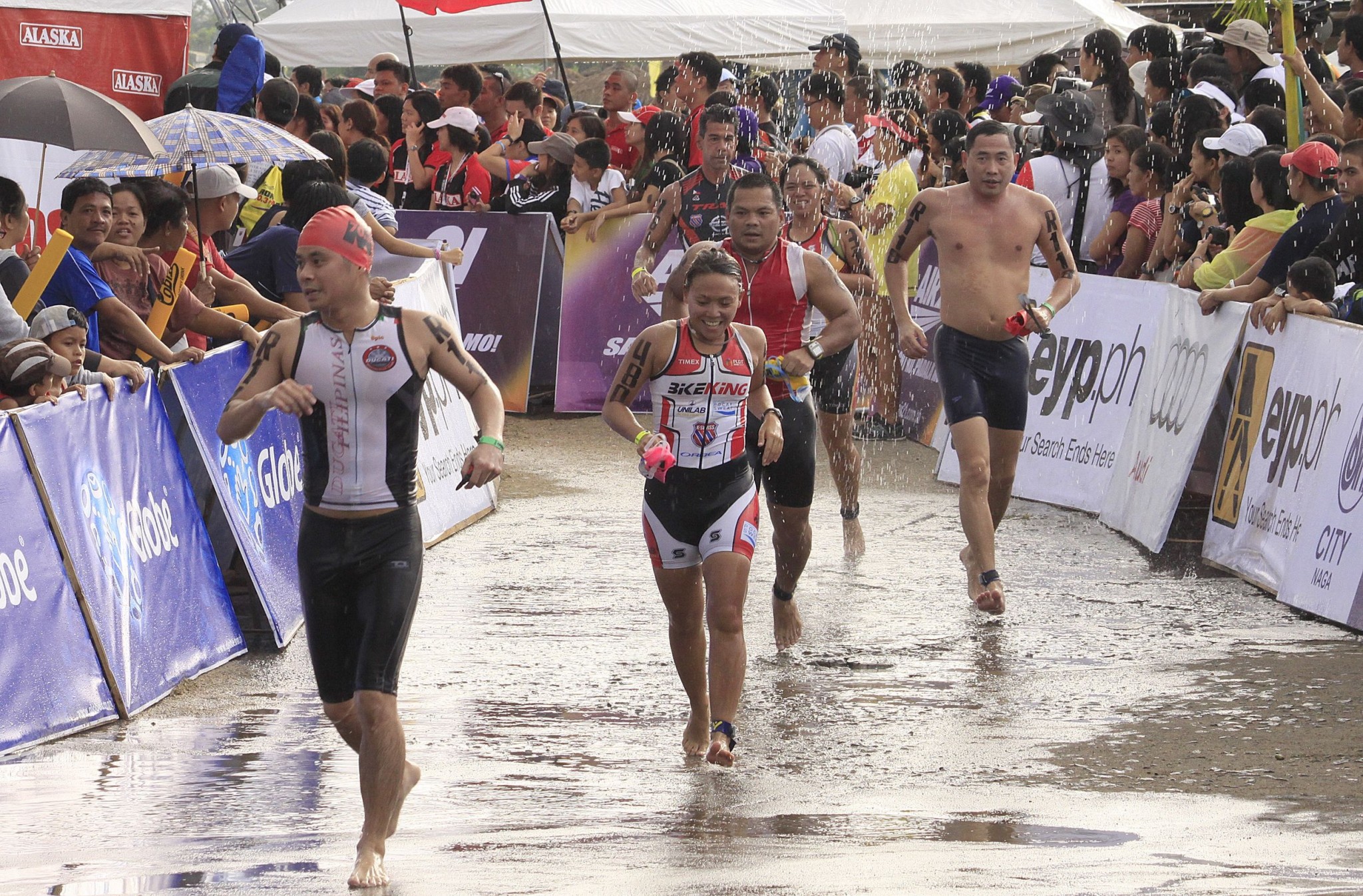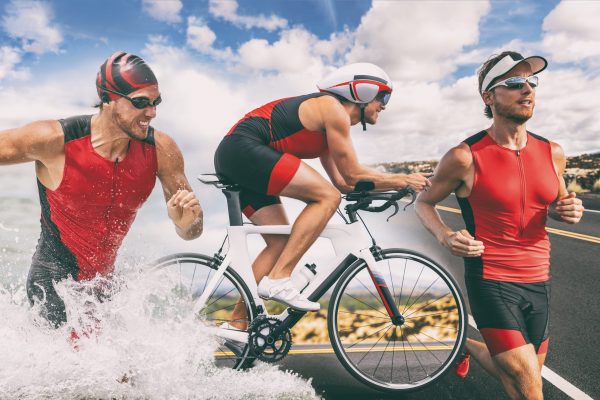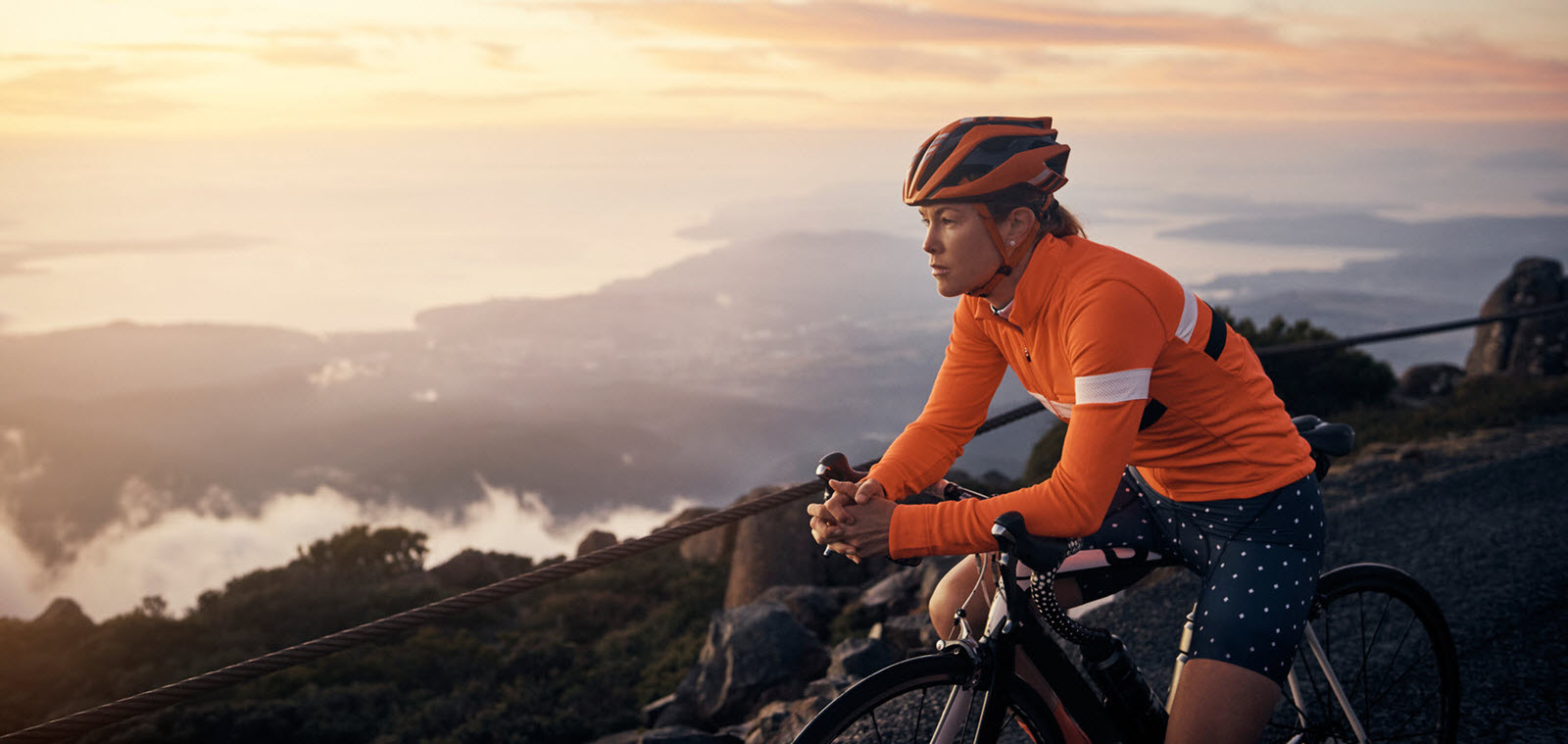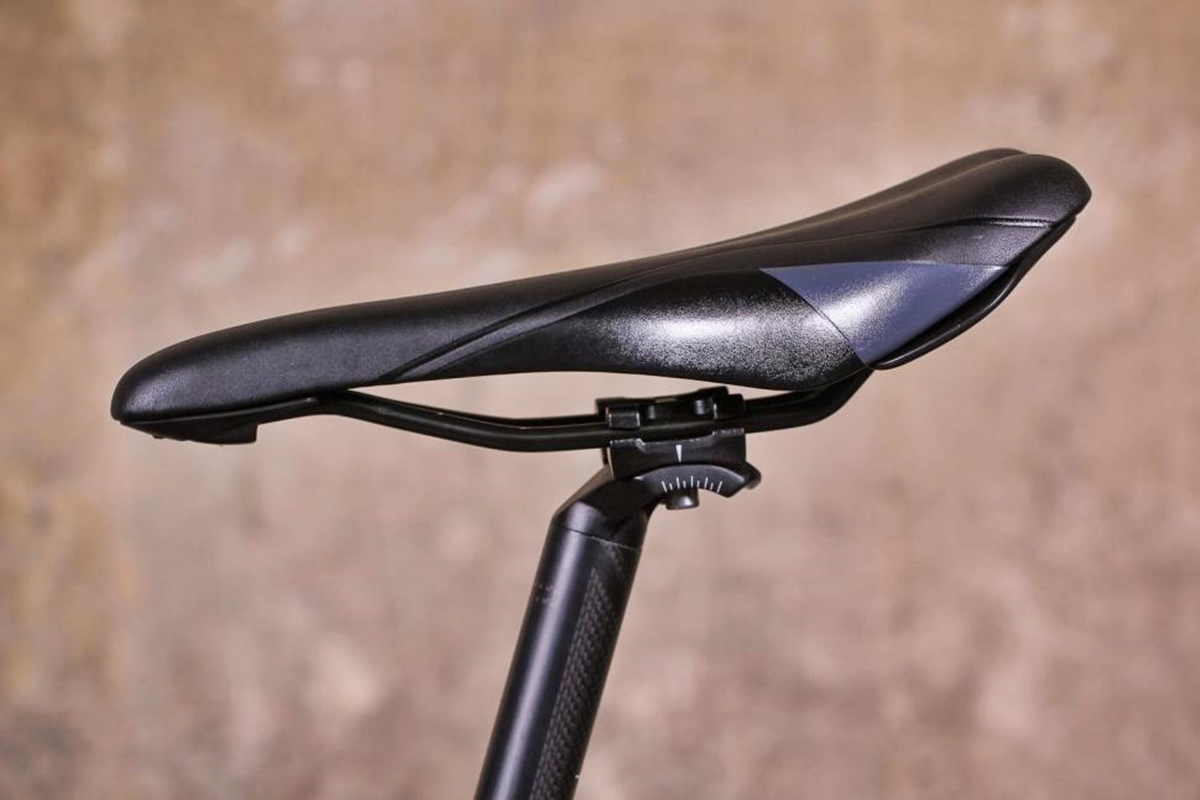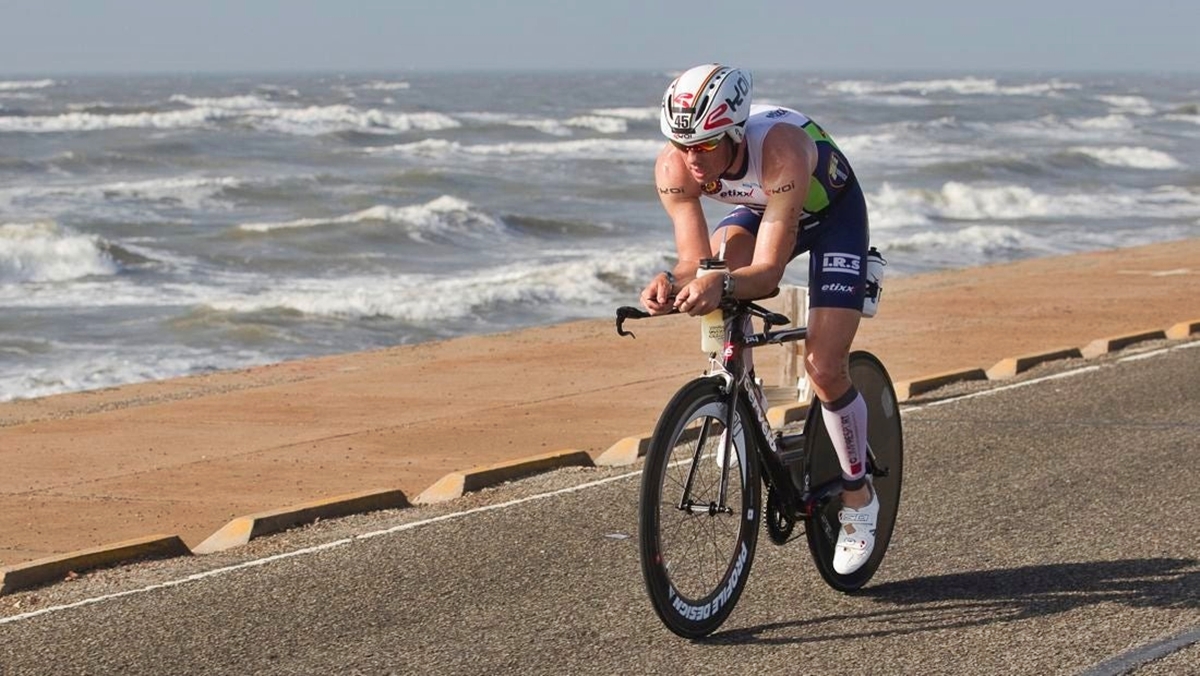

Featured
How To Shoot A Triathlon
Published: August 12, 2023
Learn how to shoot a featured triathlon event and capture all the action with our expert tips and techniques.
Introduction
Triathlons are exhilarating and challenging events that test the physical and mental endurance of athletes. As a photographer, capturing the spirit and intensity of a triathlon can be both rewarding and demanding. From the adrenaline-pumping swim phase to the grueling bike ride and final sprint to the finish line, there are numerous opportunities to capture memorable moments and tell the story of these incredible athletes.
In this guide, we will explore the key aspects of shooting a triathlon, providing you with the knowledge and techniques to capture stunning photographs that showcase the excitement and determination of the participants. Whether you are a professional photographer looking to expand your portfolio or an amateur enthusiast wanting to capture the action, this article will equip you with the essential skills needed to excel in this fast-paced and dynamic environment.
From choosing the right equipment to understanding the course layout, setting up your shot, and working with challenging lighting conditions, we will cover all the necessary steps to ensure that you are well-prepared to capture the energy and emotion of a triathlon. Additionally, we will delve into the details of shooting each phase of the race, including the swim, bike, and run, as well as the transitions in between. Furthermore, we will discuss techniques for capturing dynamic action shots and compelling portraits of the athletes.
Throughout this guide, we will provide valuable tips and insights gained from our experience shooting various triathlons. By the end of this article, you will have a comprehensive understanding of how to shoot a triathlon, enabling you to capture stunning images that truly embody the essence of this incredible sport.
Preparing for the Triathlon
Before heading out to shoot a triathlon, it is essential to prepare yourself both mentally and logistically. Here are some key steps to ensure you are ready for the event:
- Familiarize Yourself with the Event: Research the triathlon in advance. Understand the course route, the timings of each phase, and any specific rules or regulations that may affect your photography.
- Communicate with Event Organizers: Reach out to the event organizers to obtain any necessary permissions, access passes, or information related to photography guidelines. This will help you avoid any unnecessary surprises or restrictions on the day of the triathlon.
- Create a Shot List: Develop a shot list based on your research and understanding of the event. Identify key moments such as the start of the race, transitions, and the finish line. This will help you stay organized and ensure you capture all the important moments.
- Check and Clean Your Equipment: Ensure that your camera, lenses, and other equipment are in proper working condition. Clean your lenses and sensors to avoid any unwanted spots or debris on your images.
- Pack Essential Gear: Pack your camera gear, extra batteries, memory cards, and any other accessories you may need. Consider bringing a tripod or monopod for stability during longer shots.
- Dress Appropriately: Dress comfortably and appropriately for the event. Keep in mind that you may need to move around quickly and be prepared for various weather conditions.
- Stay Hydrated and Fueled: Triathlons can be lengthy events, so make sure to stay hydrated and keep snacks or energy bars on hand to keep your energy levels up throughout the day.
By following these steps, you will be well-prepared to tackle the challenges of shooting a triathlon. Being organized and ready will allow you to focus on capturing the action and telling the story of the athletes as they push their physical and mental limits.
Choosing the Right Equipment
Selecting the appropriate photography equipment for shooting a triathlon is crucial in capturing high-quality and impactful imagery. Here are some factors to consider when choosing your gear:
- Camera Body: Opt for a camera body that has fast autofocus capabilities, a high burst rate, and good low-light performance. This will ensure you can capture action shots with precision and clarity.
- Lenses: Choose lenses with a versatile focal length range to cover different distances and perspectives. A wide-angle lens will allow you to capture the overall scene, while a telephoto lens will enable you to get close-up shots of individual athletes.
- Fast Prime Lens: Consider using a fast prime lens with a wide aperture for low-light situations or to create a shallow depth of field effect. This will help you isolate subjects and capture images with more impact.
- Stabilization: Opt for lenses or camera bodies with built-in image stabilization or consider using a tripod or monopod for stability during longer shots. This will help prevent blurry images, especially when shooting with longer focal lengths.
- Memory Cards: Invest in high-capacity and high-speed memory cards to ensure you can capture a large number of images without any interruptions or delays.
- Battery Life: Triathlons can be lengthy events, so make sure to have spare batteries or a battery grip to avoid running out of power during critical moments.
- Camera Bag: Choose a camera bag that is comfortable, weather-resistant, and allows for easy access to your equipment. Consider a backpack style that evenly distributes the weight for long hours of shooting.
- Additional Accessories: Don’t forget to pack essentials like lens cleaning kit, rain cover, lens hood, and a remote shutter release. These accessories will help protect your gear and enhance your shooting experience.
Ultimately, the right equipment will depend on your shooting style, personal preferences, and budget. Test and familiarize yourself with your gear before the event to ensure you are comfortable using it and can maximize its potential during the triathlon. Remember, having the right tools will greatly contribute to your ability to capture the energy and excitement of the event.
Understanding the Course
Before photographing a triathlon, it’s crucial to have a comprehensive understanding of the course layout. This knowledge will enable you to anticipate key moments and position yourself strategically to capture the best shots. Here are some essential aspects to consider when familiarizing yourself with the course:
- Start and Finish Lines: Identify the exact locations of the start and finish lines. These areas are usually packed with energy and emotion, making them excellent spots to capture dynamic shots of athletes at the beginning and end of the race.
- Transitions: Determine the locations of the transition areas between each phase of the race. These areas can be chaotic yet full of action as athletes change from swimming to biking, and then from biking to running. Positioning yourself near the transitions can yield exciting photo opportunities.
- Swim Phase: Understand the swim route and consider locations where you can capture the athletes as they enter and exit the water. Shots from above, such as from a bridge or viewing platform, can provide unique perspectives.
- Bike Phase: Determine the bike course and identify sections that offer scenic backdrops or challenging terrain. Look for corners, hills, or other visually appealing elements that can add drama to your images.
- Run Phase: Study the run route and locate areas where the athletes pass through interesting landscapes or landmarks. Look for spots where you can capture close-up shots of determined runners or dynamic group shots.
- Spectator Areas: Take note of popular spectator areas along the course. These spots often have enthusiastic crowds and can provide excellent opportunities for capturing the excitement and energy of the event.
- Alternative Routes: Be aware of any alternative routes or detours that may come into play due to unforeseen circumstances. This will help you adapt and adjust your shooting positions accordingly.
Keep in mind that the course layout can vary from race to race, so it’s important to review the specific details of the triathlon you are photographing. Familiarizing yourself with the course will enable you to anticipate the flow of the event and capture decisive moments that encapsulate the essence of the race.
Setting Up Your Shot
Setting up your shot properly is essential to capturing compelling and visually impactful images during a triathlon. Here are some key considerations to keep in mind when positioning yourself and preparing for the shoot:
- Scout the Location: Arrive at the venue early and explore the course before the event starts. Familiarize yourself with the surroundings and identify potential vantage points and interesting backgrounds for your shots.
- Perspective and Composition: Experiment with different perspectives and compositions to create visually engaging images. Play with leading lines, utilize the rule of thirds, and incorporate foreground elements to add depth and interest to your photographs.
- Foreground Action: Look for opportunities to include foreground action in your shots. This can be achieved by positioning yourself near corners, curves, or obstacles where athletes are likely to face challenges. Capturing their determination and grit in such situations can make for captivating images.
- Subject Isolation: Use shallow depth of field to isolate your subject from the background and create a sense of focus and intensity. This technique helps draw the viewer’s attention to the athlete and emphasizes their determination and effort.
- Capturing Emotion: Observe and anticipate emotional moments during the race, such as athletes celebrating victories or displaying exhaustion. These raw and genuine emotions can tell powerful stories and contribute to the overall narrative of your photographs.
- Experiment with Motion: Play with different shutter speeds to convey a sense of motion in your shots. A slower shutter speed can create motion blur and give a dynamic feel to the image, while a faster shutter speed can freeze action and highlight details.
- Continuous Shooting Mode: Utilize the continuous shooting mode on your camera to capture a sequence of shots in rapid succession. This allows you to have multiple frames to choose from and increase your chances of capturing the perfect moment.
- Consider Safety: Always prioritize the safety of yourself and the athletes. Ensure that your shooting position does not obstruct the flow of the race or put anyone in danger. Be aware of your surroundings and follow any instructions or guidelines provided by event organizers.
Remember, setting up your shot effectively requires a combination of technical knowledge, creativity, and adaptability. By considering these factors and continuously evaluating the scene, you will be able to capture powerful images that showcase the intensity and beauty of the triathlon.
Capturing the Swim Phase
The swim phase of a triathlon is a challenging yet visually stunning portion of the race. As a photographer, capturing the athletes as they navigate through the water requires careful planning and technique. Here are some tips to help you capture compelling images during the swim phase:
- Position Yourself Strategically: Scout the swim course in advance and choose a location that provides a clear view of the athletes as they enter and exit the water. Consider elevated positions like a bridge or platform to capture unique angles.
- Utilize a Telephoto Lens: Use a telephoto lens to capture close-up shots of the athletes in the water. This will allow you to zoom in on their expressions, stroke technique, and interactions with other swimmers.
- Focus on Facial Expressions: Facial expressions can convey a wide range of emotions during the swim phase. Look for moments of determination, concentration, and even fatigue to tell a compelling story through your photographs.
- Experiment with Water-level Shots: Get as close to water level as possible to capture unique perspectives and dramatic images. This can be achieved by shooting from a low angle or using a waterproof housing for your camera.
- Freeze the Action: Use a fast shutter speed to freeze the motion of the swimmers in mid-stroke. This technique can result in sharp and dynamic images that showcase the power and athleticism of the participants.
- Include the Environment: Incorporate the surrounding environment into your photographs to provide context and add visual interest. This could include elements such as the shoreline, buoys, or natural features.
- Shoot in Burst Mode: Enable burst mode on your camera to capture a rapid sequence of images. This will help you capture decisive moments and increase your chances of getting the perfect shot.
- Experiment with Composition: Play with composition by utilizing leading lines, framing techniques, and negative space to create visually appealing images. Be creative and try different angles and perspectives to add visual variety to your shots.
- Capture Transitions: As the athletes transition from swimming to the next phase of the race, be ready to capture them in action. These moments of intensity and focus can make for powerful and impactful images.
Remember to keep safety in mind at all times and respect the race rules and the space of the athletes. By following these tips and keeping an eye out for unique moments, you will be able to capture stunning and compelling images that showcase the determination and skill of the triathletes during the swim phase.
Shooting the Bike Phase
The bike phase of a triathlon offers exciting opportunities to capture the speed, athleticism, and determination of the athletes. As a photographer, it’s essential to plan your shots strategically and employ effective techniques to capture compelling images during this phase. Here are some tips to help you shoot the bike phase:
- Choose a Spectacular Location: Position yourself at a vantage point that showcases the scenic beauty of the course. Look for areas with interesting landscapes, architectural elements, or challenging terrain that can add visual interest to your images.
- Use a Longer Lens: Utilize a telephoto lens to capture close-up shots of the cyclists. This lens will allow you to isolate individual athletes or small groups, emphasizing their concentration and effort during the race.
- Focus on Fluid Motion: Experiment with slower shutter speeds to capture motion blur in the wheels of the bikes. This technique can add a sense of speed and dynamism to your images, conveying the fast-paced nature of the bike phase.
- Predict and Capture Key Moments: Anticipate moments of action, such as sharp turns or challenging uphill sections, where athletes may showcase intense concentration or exert extra effort. Be prepared to capture these decisive moments to add drama and narrative to your photographs.
- Experiment with Panning: Panning is a technique where you track and follow the moving subject while using a slower shutter speed. This creates a sharp subject against a blurred background, giving a sense of movement and speed. Practice panning shots to capture cyclists in action.
- Include Spectators: Incorporate the cheering crowd and enthusiastic spectators into your images. Their presence and energy can add a sense of excitement and support to the visuals, enhancing the overall feel of the bike phase.
- Capture Group Dynamics: Look for opportunities to capture groups of cyclists riding closely together. These shots showcase the teamwork and camaraderie among the athletes and can make for visually compelling images.
- Experiment with Perspective: Explore different angles and perspectives to create variety in your shots. Get lower to the ground for interesting low-angle shots or find an elevated position to capture a top-down perspective. Changing your shooting position can greatly enhance the visual impact of your images.
- Timing is Key: Timing is crucial in capturing impactful bike phase shots. Be patient and ready to capture the decisive moment when the athletes are in the ideal position, whether it’s going around a corner, crossing a bridge, or reaching the peak of a hill.
Remember to respect the safety guidelines and keep a safe distance from the cyclists to avoid any accidents or disruptions. By following these tips and utilizing different techniques, you’ll be able to capture captivating images that showcase the intensity and energy of the bike phase in a triathlon.
Documenting the Run Phase
The run phase of a triathlon is often the final leg of the race, where the athletes push themselves to the limit and give their all to cross the finish line. As a photographer, capturing the determination, endurance, and emotions of the runners is key. Here are some tips to help you document the run phase effectively:
- Position Yourself Strategically: Scout the run course in advance and identify key locations that offer interesting backdrops or challenging terrain. Look for sections where the runners may display intense expressions or where crowds of spectators gather to cheer them on.
- Emphasize Facial Expressions: Focus on capturing the facial expressions of the runners as they endure the physical and mental challenges of the run phase. These emotions can range from sheer determination to exhaustion, illustrating the immense effort put forth by the athletes.
- Seek out Unique Moments: Look for unique moments during the run phase that can add storytelling elements to your photographs. This could include athletes high-fiving spectators, congratulating fellow runners, or crossing significant markers along the course.
- Zoom in for Details: Utilize a telephoto lens to zoom in on specific details, such as the athletes’ sweat-soaked faces, their worn-out shoes, or the tension in their muscles. These close-up shots can convey the intensity and physical strain of the run phase.
- Capture the Joy of Accomplishment: Be ready to capture the emotions of joy, relief, and triumph as the runners approach the finish line. These are potent moments that depict the culmination of their hard work and dedication throughout the triathlon.
- Experiment with Different Perspectives: Shoot from various angles and perspectives to add visual interest to your images. Get down low to capture runners at eye level, or find elevated positions to capture the energy and determination of the athletes from a unique vantage point.
- Include Elements of the Environment: Incorporate elements from the surroundings, such as landmarks, scenic landscapes, or vibrant crowd scenes. These visual elements provide context and enhance the storytelling aspect of your photographs.
- Focus on Composition: Compose your shots carefully to create visually compelling images. Utilize leading lines, framing techniques, and negative space to draw the viewer’s attention to the main subject and create a sense of balance and harmony.
- Be Mindful of Lighting: Pay attention to the lighting conditions during the run phase, especially if the triathlon takes place during the early morning or late afternoon. Utilize natural light to your advantage, and be mindful of shadows and harsh contrasts that may affect the quality of your images.
- Capture the Spirit of the Event: Look for opportunities to capture the camaraderie among the runners, whether it’s a high-five between athletes or a supportive gesture from a fellow participant. These moments showcase the community and sportsmanship that define the spirit of a triathlon.
Remember to respect the athletes and follow any rules or instructions given by event organizers. By applying these tips, you’ll be able to document the run phase in a way that captures the physical challenges, emotions, and triumphs experienced by the participants in the final stretch of the race.
Capturing Transitions
Transitions are critical moments during a triathlon, where athletes switch between different disciplines. As a photographer, capturing these transitions can offer unique opportunities to document the fluidity and intensity of the race. Here are some tips for capturing compelling images during the transitions:
- Study the Transition Area: Before the race, familiarize yourself with the layout and logistics of the transition area. Observe the flow of athletes as they move between disciplines and identify key spots where you can capture interesting moments.
- Position Yourself Strategically: Find an advantageous location within the transition area that allows you to capture the athletes up close during the transition. Look for areas with good lighting and interesting backgrounds to enhance the visual appeal of your images.
- Focus on Details: Zoom in and capture the small details that define the transitions, such as athletes putting on or removing gear, adjusting equipment, or grabbing hydration supplies. These details convey the precision, concentration, and speed at which the athletes shift gears.
- Capture Expressions: Look for moments of concentration, determination, or even relief on the athletes’ faces as they prepare for the next phase. These facial expressions can bring a human element to your images, highlighting the emotions involved in the transition process.
- Shoot in Burst Mode: Enable burst mode on your camera to capture a rapid sequence of images during the transitions. This ensures that you don’t miss any crucial moments and gives you a range of options to choose from when selecting the best shot.
- Utilize Wide-angle Lenses: Wide-angle lenses can capture the full scene of the transition area, showing the hustle and bustle of athletes around their gear, creating a sense of the overall atmosphere and energy of the race.
- Anticipate Action: Pay attention to athletes who are moving swiftly through the transition area. Be prepared to capture them in motion as they transition from one discipline to the next, showcasing the agility and athleticism of the participants.
- Include Support Crews: Photograph not only the athletes but also those assisting and supporting them during the transitions. Focus on the teamwork and camaraderie among the athletes and their support crew, capturing the dynamic interactions between them.
- Seek Unique Moments: Look for unique and unexpected moments during the transitions, such as funny interactions, acts of sportsmanship, or the personal touches that athletes bring to their transition areas. These moments add depth and character to your images.
- Experiment with Angles: Explore different angles and perspectives to add variety to your transition images. Shoot from a low angle or find elevated positions to capture interesting viewpoints that showcase the transitions from a fresh and visually engaging perspective.
Remember to respect the athletes’ space and follow any guidelines provided by event organizers. By applying these tips, you will be able to capture the energy, focus, and seamless transfer between disciplines that make the transitions an integral part of the triathlon experience.
Tips for Action Shots
Action shots are a crucial element of capturing the excitement and intensity of a triathlon. These fast-paced moments require specific techniques to freeze the action and convey a sense of movement. Here are some tips to help you capture stunning action shots during a triathlon:
- Use a Fast Shutter Speed: Set your camera to a high shutter speed to freeze the motion and ensure sharp images. A shutter speed of at least 1/1000th of a second is recommended to effectively capture the fast movements of the athletes.
- Continuous Autofocus: Enable continuous autofocus mode on your camera to track the moving subjects accurately. This ensures that your subject remains in focus throughout the action and minimizes the chance of getting blurry images.
- Pre-focus Technique: Anticipate where the action will occur, pre-focus on that spot, and capture the athletes as they enter the frame. This technique helps you capture sharp action shots without any delay in autofocus.
- Burst Mode: Use burst mode to capture a rapid sequence of images. This increases the likelihood of capturing the perfect moment and allows for a selection of shots to choose from later during post-processing.
- Pan with the Athletes: Practice panning, a technique where you follow the movement of the athletes with a slow shutter speed while keeping them in focus. This creates a sense of motion blur in the background while maintaining a sharp subject, resulting in dynamic and visually captivating images.
- Focus on Facial Expressions: Pay attention to the facial expressions of the athletes during intense moments of action. Capturing their determination, focus, and even moments of joy can add an emotional element to your images, enhancing their impact.
- Shoot from Different Perspectives: Experiment with different angles and perspectives to add variety to your action shots. Get down low to capture the athletes at eye level, or find elevated positions for a bird’s-eye view. Changing your shooting position can add depth and visual interest to your photographs.
- Use Leading Lines: Incorporate leading lines in your composition to guide the viewer’s eye and create a sense of movement. Look for natural lines, such as roads, bike lanes, or running tracks, to enhance the dynamic feel of your images.
- Capture Splashes and Dust: Freeze the water splashes created by swimmers or the dust kicked up by runners and cyclists. These elements add an extra layer of action and intensity to your images, emphasizing the energy and motion of the athletes.
- Timing is Everything: Be patient and attentive to capture the decisive moment when the athletes are in the most impactful positions. This could be during a powerful stride, an aggressive turn, or a moment of triumph as they cross the finish line.
Remember to follow the rules and guidelines set by event organizers and ensure the safety of yourself and the athletes at all times. By applying these tips and techniques, you’ll be well-equipped to capture dynamic and powerful action shots that truly showcase the excitement and athleticism of the triathlon.
Shooting Portraits of Athletes
Portraits of athletes in a triathlon can give a personal and intimate glimpse into their determination and passion for the sport. These shots allow you to capture the individual spirit and character of the athletes. Here are some tips for shooting compelling portraits of triathlon athletes:
- Establish a Connection: Interact and establish a connection with the athletes before taking their portrait. Help them feel comfortable and relaxed, which will result in natural and genuine expressions.
- Choose the Right Background: Select a background that complements and enhances the subject without overwhelming them. Consider using elements of the race venue, such as race signage, the finish line, or natural landscapes, to provide context and add visual interest to the portraits.
- Showcase the Gear: Incorporate the athletes’ equipment, such as their bikes, running shoes, or swimming gear, to provide a visual representation of their dedication and commitment to the sport.
- Find Good Lighting: Seek out natural light to create a soft and flattering glow on the athletes’ faces. Avoid harsh midday sunlight and consider shooting during the golden hour, shortly after sunrise or before sunset, for warm and beautiful lighting conditions.
- Focus on Expressions: Capture the facial expressions that convey the determination, focus, and passion of the athletes. Look for moments when they are lost in their thoughts or display a range of emotions that tell their unique stories.
- Use a Wide Aperture: When shooting close-up portraits, use a wide aperture (low f-number) to create a shallow depth of field. This technique will isolate the athlete from the background and draw attention to their face, emphasizing their determination and intensity.
- Direct Poses: Guide the athletes with direction and suggestions for poses. Encourage them to relax, show their personalities, or showcase specific aspects of their sport, such as holding a swim cap or flexing their muscles.
- Capture Candid Moments: While posed portraits are valuable, also look for candid moments that capture the authenticity and raw emotions of the athletes. These shots can often tell a more compelling story than traditional portraits.
- Highlight Unique Features: Pay attention to the unique features of the athletes, such as tattoos, distinctive gear, or physical attributes, and find creative ways to include them in the portraits. These elements can add depth and character to the images.
- Experiment with Composition: Explore different compositions, angles, and framing to add visual variety to your portraits. Emphasize details like the athletes’ hands, feet, or even their eyes to create impactful and engaging images.
Remember to always communicate with the athletes and respect their preferences and comfort levels. Encourage them to be themselves and capture the essence of their passion and dedication through your portraits. By following these tips, you’ll create visually captivating portraits that celebrate the individuality and soul of the triathlon athletes.
Dealing with Challenging Lighting Conditions
Challenging lighting conditions are inevitable when shooting a triathlon due to varying weather conditions and the different phases of the race. As a photographer, it is important to adapt and overcome these challenges to capture stunning images. Here are some tips for dealing with difficult lighting conditions during a triathlon:
- Shoot in Raw: When faced with challenging lighting conditions, shooting in raw format gives you more flexibility during post-processing. It allows you to adjust white balance, exposure, and other parameters without losing image quality.
- Utilize Exposure Compensation: Use exposure compensation to adjust the exposure settings based on the lighting conditions. Increase the exposure compensation for darker environments and decrease it for brighter settings to achieve a balanced exposure.
- Manage Harsh Midday Sunlight: During the midday when the sun is overhead, the lighting can be harsh and create unflattering shadows. Try to find shaded areas or use a diffuser to soften the light and achieve more even lighting on the athletes’ faces.
- Embrace Silhouettes: In situations with strong backlighting, embrace the opportunity to capture silhouettes of the athletes. Position yourself so that the light source is behind the subject, and expose for the background, allowing the athletes to appear as dark, recognizable shapes.
- Use Reflectors or Fill Flash: Reflectors or fill flash can help fill in shadows on the athletes’ faces when shooting in high-contrast lighting conditions. The fill light will help balance the exposure and reduce harsh shadows, providing a more pleasing and evenly lit result.
- Make the Most of Golden Hour: Aim to shoot during the golden hour, which is shortly after sunrise or before sunset when the light is soft and warm. During this time, the light is more flattering, and the low angle creates a beautiful and ethereal atmosphere for your images.
- Bracket Your Shots: In challenging lighting situations, consider bracketing your shots by capturing multiple exposures. This technique allows you to blend the exposures later in post-processing to achieve a well-balanced image with details in both the highlights and shadows.
- Expose for the Subject: Prioritize exposing for the main subject, such as the athlete’s face, rather than the overall scene. Use spot metering or partial metering to get an accurate exposure reading on the subject, ensuring that they are properly exposed.
- Emphasize Bokeh: When dealing with distracting or unappealing backgrounds, use a wide aperture (low f-number) to create a shallow depth of field and blur the background. This technique helps to isolate the subject and draw attention to the athlete, minimizing any distracting elements.
- Embrace Black and White: If the lighting conditions render the colors less appealing or uneven, consider converting your images to black and white. Black and white photography can emphasize contrast and shapes, allowing you to focus on the emotions and expressions of the athletes.
Dealing with challenging lighting conditions requires creativity, adaptability, and an understanding of your camera settings. By employing these techniques and embracing the unique opportunities each lighting situation presents, you can overcome obstacles and capture compelling images that convey the essence and energy of the triathlon, regardless of the lighting conditions.
Editing and Post-Processing
Editing and post-processing are essential steps in bringing out the best in your triathlon photographs. These techniques allow you to enhance the images, correct any imperfections, and add your personal touch to the final result. Here are some tips for effective editing and post-processing:
- Select the Best Shots: Review your images and select the best shots that tell a compelling story and capture the essence of the triathlon. Consider the technical quality, composition, and emotional impact of each image in your selection process.
- Adjust White Balance: Correct the white balance to ensure accurate color representation in your images. Use the temperature and tint adjustments to achieve the desired color rendition, whether it’s to enhance the warmth of the golden hour or neutralize the lighting conditions.
- Enhance Exposure and Contrast: Adjust the exposure and contrast levels to optimize the tonal range and overall brightness of your images. Be careful not to overdo these adjustments, as it can result in loss of detail in the highlights or shadows.
- Sharpen and Reduce Noise: Apply appropriate sharpening techniques to enhance the clarity and details in your images. Conversely, reduce noise in low-light or high-ISO shots to maintain the image quality. Use selective sharpening and noise reduction tools to target specific areas.
- Adjust Saturation and Vibrance: Fine-tune the saturation and vibrance levels to enhance the colors in your images. Be cautious not to oversaturate, as it can result in unrealistic and unnatural-looking images. Aim for a balanced and pleasing color palette.
- Crop and Straighten: Use cropping and straightening tools to improve the composition and remove any distractions in your images. Experiment with different aspect ratios to create visual interest or emphasize specific elements in the frame.
- Apply Graduated Filters and Adjustment Brushes: Use graduated filters or adjustment brushes to selectively enhance specific parts of your images. This technique allows you to control exposure, contrast, saturation, and other adjustments in targeted areas, resulting in a more balanced and polished final image.
- Experiment with Black and White Conversion: Convert select images to black and white to create a timeless and dramatic effect. Adjust the tonal range, contrast, and individual color channels to achieve the desired black and white aesthetic.
- Add Creative Effects: Explore creative effects such as vignetting, split-toning, or adding a film grain texture to add depth and style to your images. However, be mindful not to overuse these effects, as they can distract from the main subject.
- Maintain a Consistent Editing Style: Develop a consistent editing style that reflects your artistic vision and the story you want to tell. Using presets or creating your own editing profiles can help maintain consistency across your triathlon photographs.
Remember that editing and post-processing should enhance the images while maintaining their authenticity. Avoid excessive edits that lead to unnatural results or compromise the integrity of the original scene. Strive for a balanced and polished final result that showcases the true essence and energy of the triathlon.
Conclusion
Shooting a triathlon can be a thrilling and fulfilling experience for any photographer. It provides an opportunity to capture the physical challenges, emotional moments, and triumphs of the athletes as they push themselves to the limit. By following the tips and techniques discussed in this guide, you will be well-equipped to capture the essence and energy of a triathlon through your photographs.
From preparing for the event and choosing the right equipment to understanding the course layout and setting up your shots, every aspect plays a crucial role in capturing stunning images. Whether it’s freezing the action during the swim and bike phases, documenting the grit and determination of the runners, or capturing the transitions and portraits of the athletes, each phase of the triathlon presents unique opportunities.
While challenging lighting conditions can pose obstacles, learning how to adapt and overcome them will yield remarkable results. And once you’ve captured a wide range of shots, the editing and post-processing stage allows you to enhance and showcase the best of your work, adding your personal touch and creative vision to the final images.
Remember, as a photographer, your role goes beyond technical skills and equipment. It is essential to stay respectful of the athletes, follow race rules and guidelines, and prioritize safety at all times. Building connections and capturing the emotions and character of the athletes will help you tell a compelling story through your photographs.
So, go out there, immerse yourself in the world of triathlons, and capture the moments that make this sport so inspiring. With the knowledge and techniques gained from this guide, you are well-equipped to capture the energy, determination, and triumph of the athletes participating in a triathlon.
